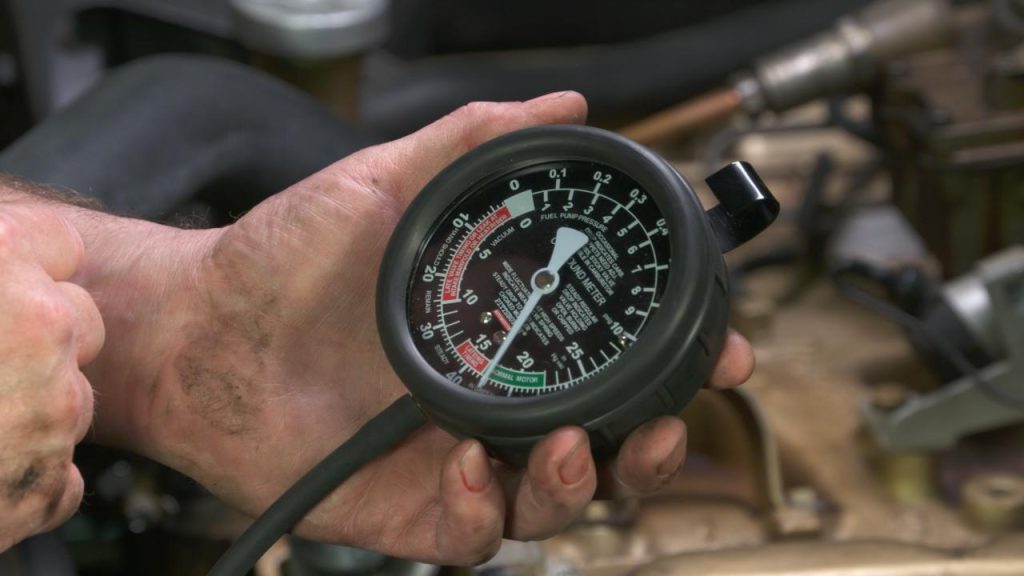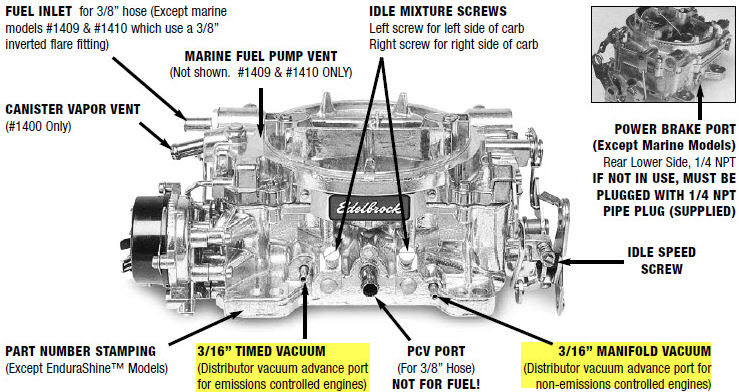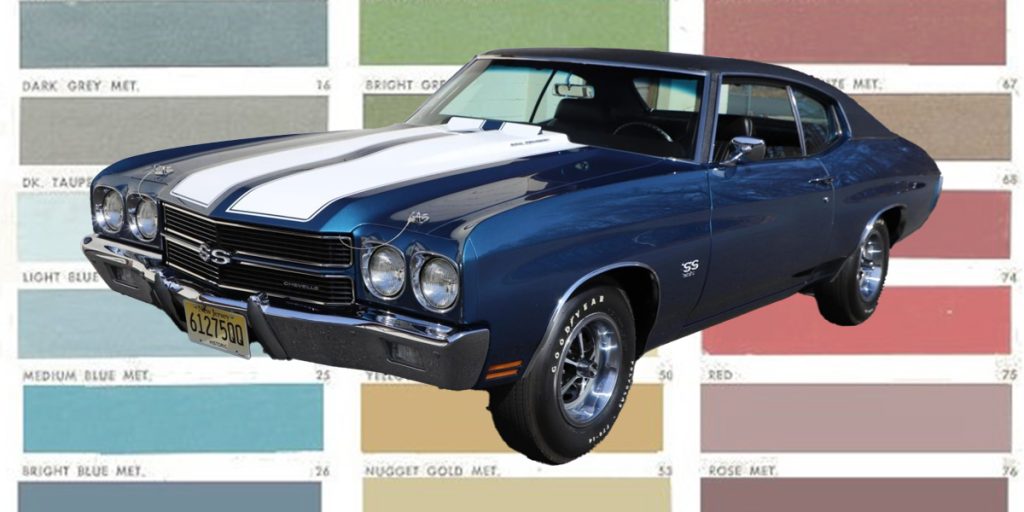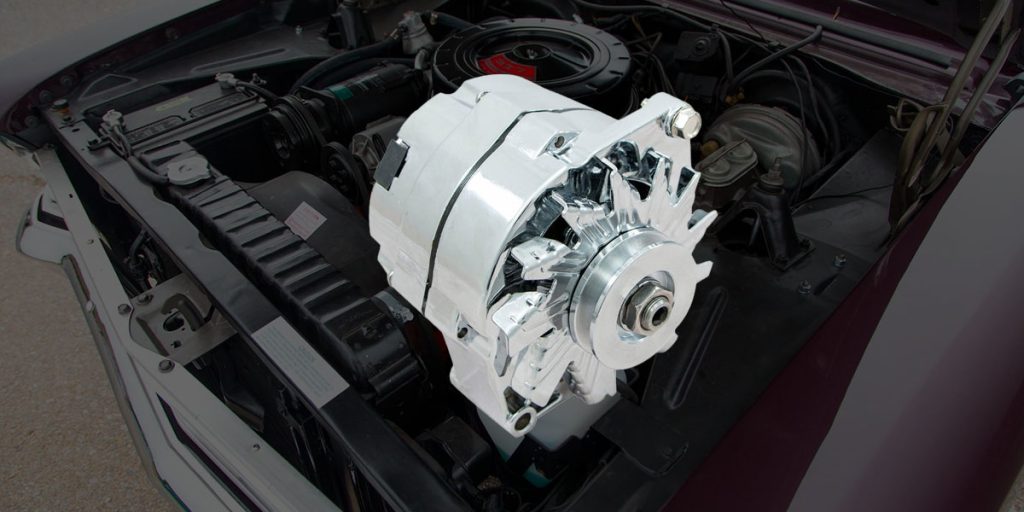Ported vs. Manifold Vacuum for Distributor Vacuum Advance in GM Applications
In the world of classic General Motors (GM) engines, proper ignition timing is needed for the best performance. A big part of that timing system is vacuum advance, and much debate exists around whether to connect it to ported vacuum or manifold vacuum, or leave it disconnected altogether. Understanding the difference and how it impacts the behavior of GM’s vacuum advance distributors doesn’t have to be a big mystery.

What Is Vacuum Advance?
The vacuum advance is a system built into traditional GM distributors that advances ignition timing based on engine vacuum. It supplements the mechanical (centrifugal) advance, which adjusts timing based on RPM.
Centrifugal advance increases timing as RPM increases.
Vacuum advance adds additional advance under light load conditions, like cruising or idle.
Vacuum advance operates through a diaphragm and spring mechanism in the distributor that moves the breaker plate (or magnetic pickup in later models), advancing the spark when vacuum is applied.
Ported vs. Manifold Vacuum: What's the Difference?
| Feature | Ported Vacuum | Manifold Vacuum |
|---|---|---|
| Source Location | Above the throttle plates | Below the throttle plates |
| Vacuum at Idle | Near Zero | High (15–20 inHg) |
| Vacuum at Cruise | High (like manifold) | High |
| Vacuum Under Load | Drops significantly | Drops significantly |
| Typical OEM Use | Emissions-era engines (post-1970s) | Pre-emissions engines and performance builds |
Ported Vacuum Behavior
Ported vacuum is a throttle-position-dependent signal. With the throttle blades closed at idle, the port sees little to no vacuum. As the throttle opens slightly, the port becomes exposed to manifold vacuum and begins to climb.
- Idle: No vacuum → no vacuum advance
- Light cruise: Moderate to high vacuum → added advance
- Under load: Vacuum drops → advance reduces
This style of vacuum advance was favored in emissions-era GM vehicles, but it often led to hotter engine temps, poor idle quality, and hesitation.
Manifold Vacuum Behavior
Manifold vacuum is highest at closed throttle, like at idle or light cruise. It drops sharply under load or full throttle.
- Idle: High vacuum → maximum vacuum advance
- Light cruise: Still high vacuum → sustained advance
- Under load: Vacuum drops → vacuum advance falls off
This setup was common in pre-emissions GM vehicles and most performance tuning scenarios, where the goal was better idle stability and improved throttle response.
GM Distributor Design and Historical Use
1950s–1960s:
GM engines like the 327, 283, 396, and 409 commonly used the manifold vacuum for vacuum advance. At idle, the extra advance helped smooth out idle, especially with aggressive cams.
1970s–1980s:
With emissions laws, GM moved to ported vacuum on engines like the 305, 350, and 400. These often had thermal vacuum switches and delay valves to control timing, sacrificing performance for emissions compliance.
⚙️ Performance Impacts
| Area | Ported Vacuum | Manifold Vacuum |
|---|---|---|
| Idle Quality | Rougher, hotter idle | Smoother idle, cooler engine |
| Throttle Response | Sluggish from stop | Sharper off-idle response |
| Cooling at Idle | Runs hotter | Lower engine temps |
| Fuel Economy | Slightly worse | Improved at cruise |
| Driveability | Can stumble off-idle | Better drivability at light throttle |
Tuning Tips for GM Distributors
- Vacuum Canister Specs Matter: Most GM cans provide 10–16° at ~15 inHg. Check with a timing light.
- Use Limiter Plates: Prevent over-advance at cruise. Adjustable cans help fine-tune.
- Combine Advance Properly:
Example:
Base: 12°
Mechanical: 22°
Vacuum: 12°
Total: 46° at cruise - Manifold Vacuum is Preferred: Especially for street-driven builds with mild cams.

Common Myths
- “Manifold vacuum causes too much advance at idle” — False, if your timing curve is tuned properly.
- “Ported vacuum is better for performance” — Actually reduces advance when you need it most.
- “Emissions-era distributors must use ported” — You can switch with tuning and adjustable vacuum cans.
Real-World Test: 350 SBC, Mild Cam, Quadrajet
Ported Vacuum:
Idle timing: 12° base only
Idle vacuum: 10 inHg
Idle RPM: 750
Engine temp: 205°F
Manifold Vacuum:
Idle timing: 12° base + 14° vacuum = 26°
Idle vacuum: 12 inHg
Idle RPM: 850 (smoother)
Engine temp: 190°F
Same car, same engine — radically better idle and cooling with manifold vacuum.

Which Should You Use?
For most classic GM V8s that are primarily street-driven builds, manifold vacuum is the better choice for vacuum advance:
- Improved idle
- Cooler engine temps
- More responsive off-idle performance
- Better fuel economy at cruise
Ported vacuum is mainly for emissions compliance or computer-controlled systems, not for performance builds.
So if you’re dialing in timing on that 327, 350, or 454, go manifold — and don’t forget to fine-tune that vacuum can and curve for best results.
If you need any help dialing in the ignition system on your classic Chevrolet, hop on SS396.com or give our friendly techs a call at (203) 235-1200!




